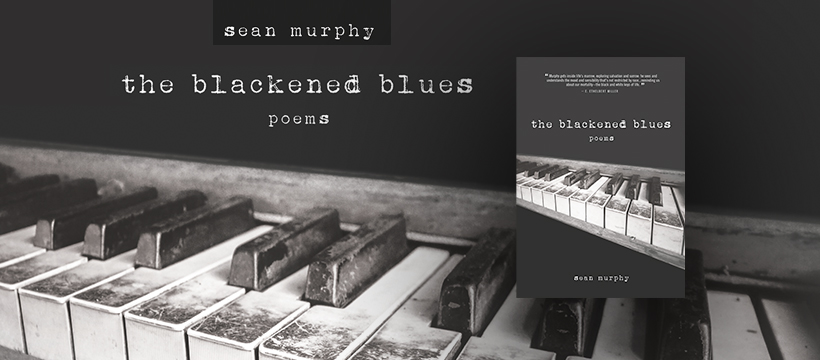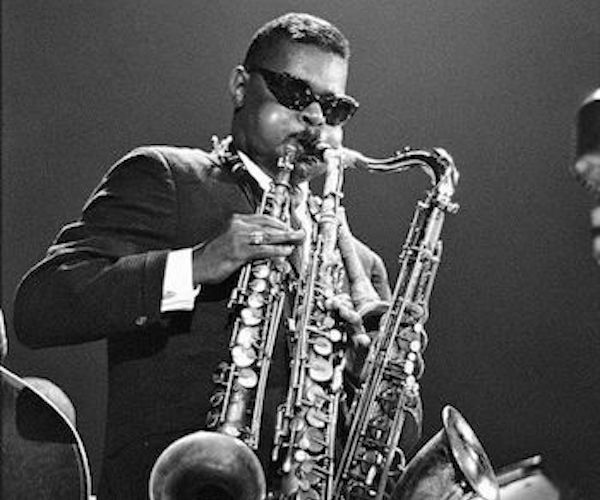
I’m happy to announce that my first poetry collection, The Blackened Blues, is available wherever you buy books (yes, *wherever*, so you don’t have to put more money in Rocket Man’s pocket; you can go directly to my publisher, Finishing Line Press, or support my pals (and 1455 partners) at D.C.’s The Potter’s House).
THE BLACKENED BLUES is part of a large and ongoing project that discusses (and celebrates) some of the author’s personal heroes who remain far less celebrated than they deserve to be. As it happens, many of them are musicians, hampered in various ways by discrimination, ranging from old fashioned racism to institutional and cultural indifference. Though there’s an elegiac sadness suffusing these poems, there’s also acknowledgment of defiant genius: they fought their battles bravely, in their art and in their lives. This collection seeks to capture something (or, hopefully, more than a few things) essential about their lives, bearing witness while also paying homage.
I’d like to introduce the collection, one poem at a time (in the order they appear in the book), and tell a little bit about the inspiration for each, by way of explanation and in tribute.
Next up is “Roland Kirk’s Dream” (Big thanks to Jerry Jazz Musician for publishing this one).
This poem’s a tribute to another one of my all-time heroes: a blind iconoclast who figured out how to play three horns simultaneously (and, due to a dream, decided to change his name from Roland to Rahsaan). Genius level = off the charts. Dismissed by idiots as a gimmick, this complex and deeply weird, surreal, gorgeous strategy enabled Kirk to deploy many voices at once, or the same voice exploring many possibilities.
Roland Kirk’s Dream
It appeared to him, he said, while he slept.
Or, rather, it revealed itself to him, the way
visions will, seeming nonsensical to those
who claim to see—the light in their eyes
conveying what they believe is required
of them—no revisions necessary for this
rough draft we’re born into, a book with
backward pages or pictures upside-down.
(What if you could train your brain to talk
through instruments, creating dialogues
out of time or space: sound that surrounds?
Are creatures in the darkness of the deep,
or farthest out in stellar regions, sightless?
Or do they perceive what nothing else can
process, forsaking the cues and clues given
to brothers and sisters slower on the uptake?
Are they blind or do they see differently?
Do our eyes watch—or just reinterpret all
they’re told, wires pulled behind the seen?)
Kirk’s work shifts things, realigning reality.
This is music that says:
I was here,
I am alive,
we don’t die
when we’re no longer here;
we are dark stars bringing light
for those who can prepare
themselves to deal with miracles,
where art becomes like armor,
protecting and serving, and if
too often it falls on deaf ears
it stays made, gets heard, remains
unreal in the ways that matter most,
bright moments or an inflated tear
exploding—like a dream deferred.
When listening to Rahsaan Roland Kirk (who was born blind and eventually taught himself to play three saxophones—simultaneously), the word that leaps to mind, which can certainly be applied to jazz in general and Rahsaan in particular, is dialogic. This is a term that the Russian literary critic Mikhail Bakhtin used to elucidate the ceaseless and very deliberately constructed internal monologues that are contained within Dostoyevsky’s novels. It concerns the notion of a narrative voice being aware of (or concerned with the exertion of) its authority, and anticipating reader reactions as well as a sort of running footnote, answering perceived questions and comments, and always attempting to maintain that autonomous position. It is many voices at once, or the same voice exploring many possibilities.
One of the many aspects of the dialogic voice in jazz music is the practice of quoting all musicians engage in, the process of referencing, mentioning, or giving props to a particular tune or composer, always with the intent of augmenting the overall effect and efficacy of the ongoing improvisation. With Rahsaan, this very purposeful and empowering technique arguably reached its apotheosis. Because he was an artist so well-schooled and hip to the history of all music, it is an education every time a Kirk tune receives the scrutiny it obviously warrants. And because jazz music is inexorably an indigenous black music, and this black music a uniquely American invention, one is necessarily immersed in a seamless expression of the dialogic articulation of America itself.
Joel Dorn (RIP), producer, raconteur and jazz ambassador, did as much as anyone to expose and celebrate the music of our national treasures. He developed an especially close relationship with Rahsaan (and made it a personal mission, during the mid-to-late 90s, to promote what he termed the “Rahsaan-aisance”). Some great reissues came out of those efforts, and his liner notes for the compilation Simmer, Reduce, Garnish and Serve might be the best I’ve ever read by any producer about any recording. In them he discusses Kirk’s final sessions, which occurred after a stroke left the musician without use of the left side of his body and forced him to undergo thrice weekly dialysis treatments.
He kept practically a pre-stroke pace in terms of live performance here and abroad and was committed to making records. His display of raw courage, grit, determination, whatever you want to call it, was mind bending. In order to fully appreciate Boogie-Woogie String Along For Real, it has to be viewed within the context of the herculean effort on Rahsaan’s part just to make it. When the session was done, Rahsaan gave me instructions as to how he wanted the album put together. We hugged goodbye, and I watched as he left the studio…(I) knew (I’d) never see him again.
Rahsaan often talked about bright moments: occasions where one feels deeply connected to the music, the message, and the soul of the messenger. To be sure, he made it rather easy: all you need do is listen with your heart as much as your ears and the music takes care of everything else—you’re just along for the ride. And yet, you’re not. You really do go somewhere: begin here and end up there: when you listen to the best jazz music, the experience is never static; you are always on your way someplace. Kirk’s ultimate legacy is creating so many bright moments, allowing us to comprehend—and rejoice in—the struggles and elations of the messenger, and the message he’s relaying: his victory and sorrow.
This is what jazz music signifies for me. As a dedicated non-musician, I use jazz as a viable source of empowerment; while it remains first and foremost a very real and easily identifiable source of extreme pleasure; it is also a vehicle, something used to get you someplace else. A stimulus that demands a response, capable of conjuring up words and concepts (and constructions) such as spirit, soul, God, karma—things that are almost unbearably oblique, or pretentious, or all-too-easily invoked, usually as readymade escutcheons for folks who ardently need a way to articulate the feeling they either can’t quite explain or desperately wish to get in touch with.

